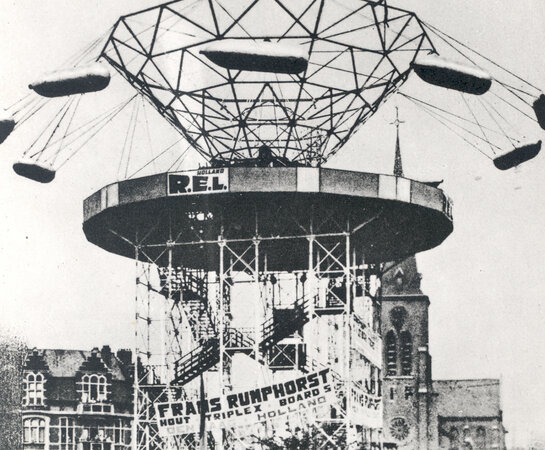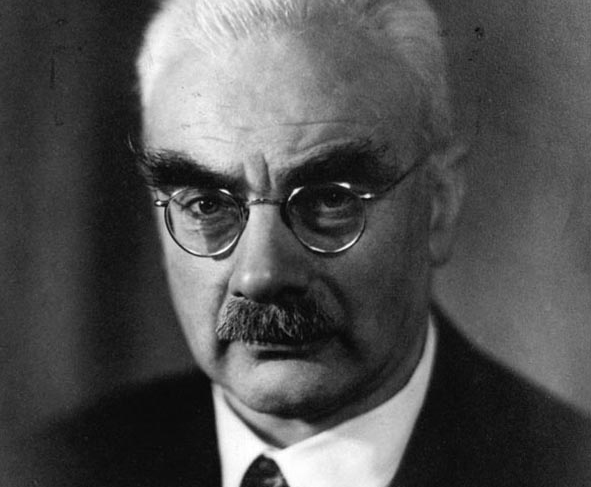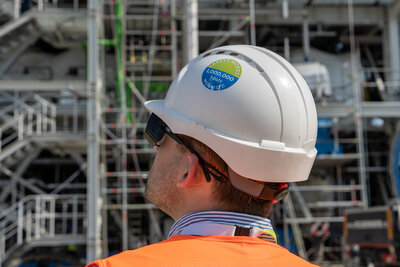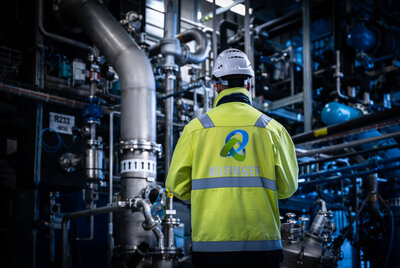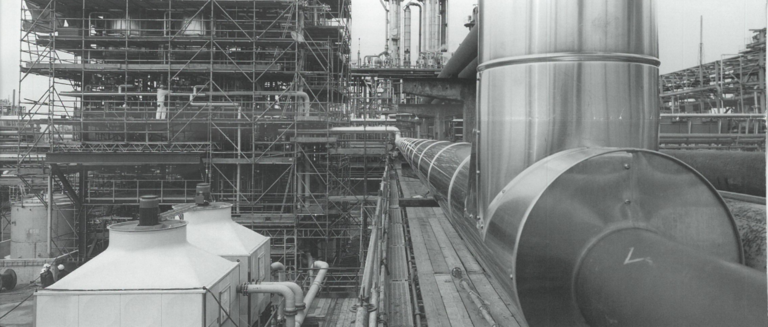
Bilfinger Tebodin History
Cutting-edge Consultancy & Engineering, reliably managing industrial projects for more than 75 years
Bilfinger Tebodin was founded and established in 1945 in The Hague, the Netherlands by Mr. Frederik van Iterson. At the time, the country was facing a period of post-war reconstruction. Our growth as a company is due in part to major historic events. These important events include: reconstruction after the Second World War, a decade of booming business, an era of environmental awareness, internationalization, and the new millennium. We have always developed along with clients' needs and we grew into more mature and dynamic partners with each economic cycle.
By anticipating technological and market development, we built up a reputation of excellence in the Netherlands, before taking our first steps abroad, starting in Abu Dhabi in 1974.
The company name ‘TEBODIN’ is an abbreviation for: N.V. Nederlandsch Technisch Bureau voor Ontwikkeling der Industrie (in English: Dutch Technical Agency for the Development of Industries). The name is a direct description of our original objectives: to make an active contribution to the technical and economic development of the post-war Netherlands.
Today, we are thriving in a wide range of market sectors. We still cherish the entrepreneurial spirit that has characterized us from the very beginning with a constant effort to help clients with the best response to change.
In April 2012, our consultants and engineers became part of Bilfinger. Being part of an international firm offers Bilfinger Tebodin’s clients a distinctive platform that offers an even broader scope of services. In 2018, the company name was rebranded to Bilfinger Tebodin to reflect the aforementioned consolidation. Based on our long-standing reputation as global independent consultants and engineers, with local execution, Bilfinger Tebodin fulfills an essential key role in Bilfinger’s overall strategy. After all, we make ideas work.
Bilfinger Tebodin began as a one-person venture in 1945, after which the business grew rapidly. Projects in the start-up phase of the company were mainly centered on gas and steel. It was Van Iterson’s expertise that led to the insight that the energy supply for heat and cooking should change from local generation, to central production distributed via pipelines. Amongst Bilfinger Tebodin’s first designs was a cokes gas plant in Vlaardingen, the first central gas plant. In the fifties construction of the basic industries, as the economic driving force of the Netherlands, was of high priority. Due to the fast expanding client base, the number of engineers grew to 130 people. Furthermore, Bilfinger Tebodin got involved in a large overseas project: the water plant Mundo Nobo in Curaçao.
Practically from the beginning, Bilfinger Tebodin was involved in the development of natural gas. The discovery of gas fields in the north of the Netherlands resulted in a boom of related activities – hundreds of kilometers of transport pipelines had to be engineered. The sixties showed a variety of projects: from a coffee-roasting house to a glass wool insulation plant and from a new reactor in Petten to the air-conditioning installations of a Technical college. All these projects formed the basis for a multi-disciplinary consultancy and engineering firm.
The oil crisis in 1973 caused reserved investment policies by the industries, which led to fine-tuning of production processes and adjusting existing installations was preferred over the construction of new industrial installations or plants. In many fields, the crisis worked as a source of inspiration. A prime example was the oil production platform in the North Sea. The increasing flow of money towards the Middle East led to the start of activities in the United Arab Emirates. After various water and gas transport projects, an office was established there.
Industrial investments focused increasingly on environmental aspects. The refinement of products and processes was one of the solutions to the strict environmental legislation. District heating was introduced, local oil fields were further developed, and various flue gas treatment installations were developed. The more sophisticated design of building installations proved to contribute to energy saving. In 1985, Bilfinger Tebodin crossed the 1,000 employees milestone.
The fall of the Iron Curtain resulted in an enormous demand for knowledge in former East Germany and Central and Eastern European countries. Many businesses relocated elsewhere in Europe. Bilfinger Tebodin broadened its network in Russia, Ukraine, Romania, Hungary, Czech Republic and Poland. The European Union membership of many countries led to knowledge exchange projects in the fields of energy, environment and water technology. With more than half of its 2,000 employees working in offices outside the Netherlands, Bilfinger Tebodin now made Europe as a whole its home base.
In the first year of the new century, Bilfinger Tebodin strengthened its knowledge base and position in Central and Eastern Europe. In the Middle East, a significant contract from PDO in Oman led to a new office in Muscat. New offices were also established in Qatar, India and Saudi Arabia. Bilfinger Tebodin started in the Asia Pacific region in 2004, rapidly leading to growth. (The operations in the Asia Pacific region were sold to Archetype in 2016). The global crisis in 2009 brought various opportunities and new potential markets to enter.
With the expansion of the office network, Bilfinger Tebodin was able to serve an increasing number of internationally operating clients. In addition, sustainability became more important than ever within the industrial markets. Bilfinger Tebodin was able to support companies by improving the sustainable values of its services and offering innovative smart and sustainable solutions. During this decade, digitalization was prevalent. New technologies and tools (e.g. BIM, Virtual Reality, Industrial 360º) were developed to optimally contribute to clients’ future factories. As of 2012, Tebodin has become part of Bilfinger. In 2018, the company name was rebranded to Bilfinger Tebodin, which emphasizes that the company is now an integral part of Bilfinger Group.
With the world population increasing, it has become clear that our planet’s precious resources are under pressure. The energy transition in Europe is developing at a rapid pace. Many of our clients in the industrial sector now strive for sustainable production and have either transitioned or begun transitioning to a circular business model.
We support industrial plant operators in handling the energy transition and circular economy by delivering a comprehensive portfolio of products and services. Over the years, Bilfinger Tebodin has gained a broad portfolio and expertise in energy efficiency, CCUS, hydrogen, biomass, electrification, wind and solar energy, high voltage transmission and sustainable solutions.
Frederik Karel Theodoor van Iterson (1877 – 1957)
Our founding father was described by his fellow engineers as a man of great vision, audacity, and originality. He led a productive life, searching for commercial advantages through improvements in industrial processes.
Frederik van Iterson was educated as a mechanical engineer. From 1913 to 1941 he was director of the Dutch State Mines and he was the driving force behind the rapid development of Europe’s most modern coal mining operation. In the 1920s he travelled throughout Europe to visit industrial installations and became advocate of product diversification at DSM.
Van Iterson retired in 1942 and soon was involved in new plans: notably a transition from the many local gas plants to centralized gas production and nationwide distribution. Even before The Hague was liberated at the end of Second World War, he made the first move toward establishing the engineering company Tebodin. On March 8, 1945, at a notarial law firm a partnership agreement was concluded for the new company.
One of his major achievements was a redesign of cooling towers. According to Van Iterson, the design of the early chimney cooling towers went against the very principle of physics. His idea was ingenious: a hyperbolic tower which increased strength and rigidity while being lighter and cheaper to build. The first ‘Van Iterson’ tower was erected at the Emma mine in the south of the Netherlands

